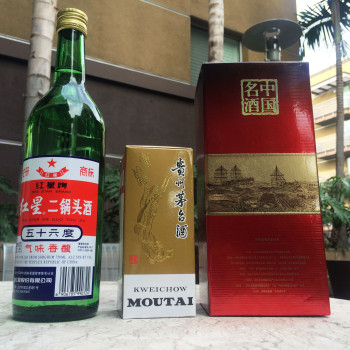Recently, Rico read a piece from New York Magazine’s excellent food blog, Grub Street, about a New York City bar called Lumos, which has been offering a big selection of a Chinese liquor called baijiu. Author Richard Morgan wrote the bar “is likely the only one in America” to specialize in the stuff.
That struck Rico as improbable, given that his current home town of L.A. is home to a huge Chinese-American community, and that baijiu is practically China’s national spirit.
Sure enough, a place called Peking Tavern in downtown L.A. has offered a baijiu menu — developed by local cocktail star Cari Hah — for a couple of years. So this week Cari and Rico sat down with a couple bottles of baijiu, ranging from high-end to bottom shelf, so she could give him a primer. Starting with a pronunciation lesson.

Cari Hah: “BYE-joe.” And baijiu really just means “clear liquid.” There are all different kinds of baijiu. It is primarily distilled from sorghum.
Rico Gagliano: You know, I’ve always heard of sorghum. I never really… I don’t know what it tastes or looks like. I’ve never eaten it.
Cari Hah: Actually, sorghum is biologically a cousin of sugarcane, slightly sweet. I don’t know of any people who just eat it…
Rico Gagliano: Yeah, you don’t see anyone just chowing down on a big sheaf of sorghum.
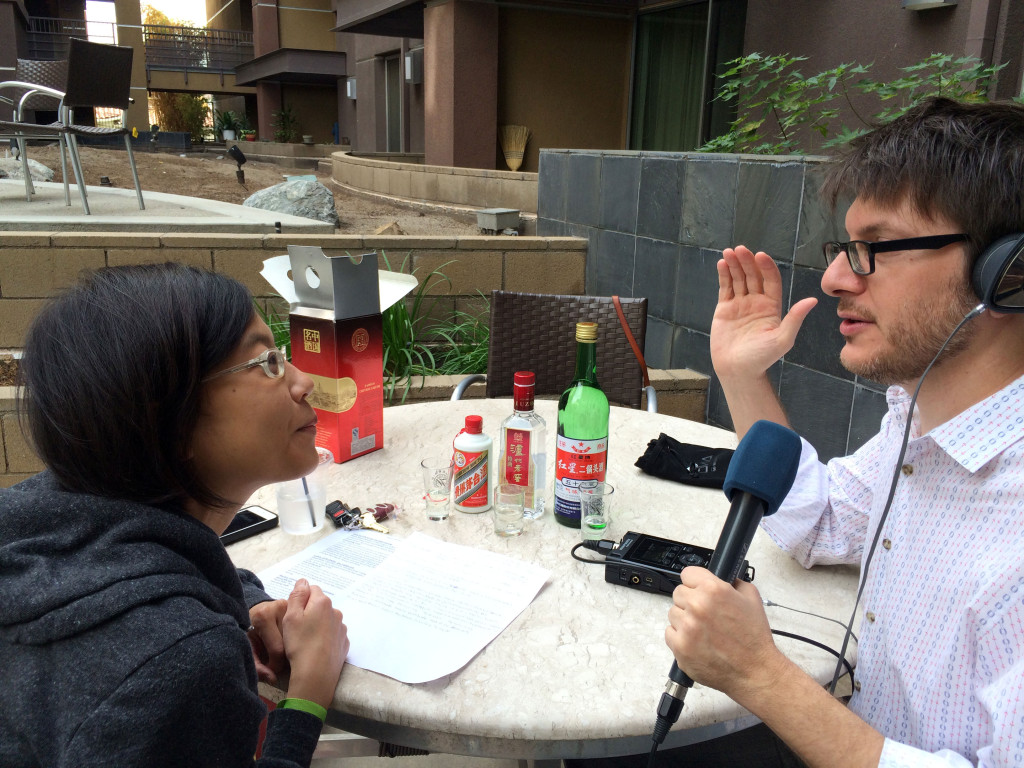
Cari Hah: Right, like I don’t go to the grocery store and try and look for some sorghum. I mean, I know that it is in the mash bill of baijiu.
Rico Gagliano: All right. It’s my understanding this is the most popular liquor in China. How popular is this?
Cari Hah: It is the most prevalent liquor. It is at every celebration. Babies are born, they drink baijiu. You celebrate a birthday, you drink baijiu. Even just like, “Oh, we’re having family dinner and we haven’t seen each other in like, a week. Let’s drink some baijiu!”
And think how many people are in China. And at every table, there’s a bottle. That’s why, baijiu, they call it “The most consumed liquor in the world.”
Rico Gagliano: So how come I haven’t heard of it until this week?
Cari Hah: Well, it wasn’t exported out of China for quite some time, and then the aroma and the flavor of it is very different than anything that a Western palate would be used to. So I’m not even sure if people were mad about not having it here. You know what I mean?
Rico Gagliano: Yeah, there wasn’t a clamor for it.
Cari Hah: Exactly. Westerners have gone to China, and traveled there, and then encountered it, and they call it “snake liquor” or, you know… all different weird nicknames. When I first started working with it, and I was telling my friends, they’re like, “Oh, yeah, that’s ‘Chinese firewater’ stuff, huh?”
Rico Gagliano: You’re crinkling your nose as you say this. Generally speaking, it’s an acquired taste?
Cari Hah: Not even acquired, a lot of times.
Mostly, I get negative reactions from people when I tell them that I’m working with baijiu.
Rico Gagliano: I’m going to say this now… and maybe I’ll end up eating my words… but I tend to have a pretty decent taste for international liquors. I was a big fan of the Dutch genever before it became a big deal here…
Cari Hah: But Dutch genever is delicious. Right off the bat, it’s delicious.
Rico Gagliano: Well, if this isn’t delicious — you helped develop an entire program of these things. Why did you do it?
Cari Hah: For me, I respect tremendously spirit tradition. And there’s such a long history of baijiu in China. The process of making baijiu is very fascinating, just how much work goes into it. Because of that, I really do respect the spirit itself, even if I don’t love the flavor of it.
Rico Gagliano: All right. Well, let’s see if I can at least respect this stuff, and maybe even love it. Should we start with the top shelf or the bottom shelf?
Cari Hah: We’re starting bottom shelf. Only the best for you, baby!
Rico Gagliano: [Laughs.] All right. What is this called?
Cari Hah: So, interestingly enough, when I was developing the baijiu cocktails for the place in L.A. called Peking Tavern, I did a blind tasting, and the one that I chose to actually use in the cocktails is the first one that you’ll be trying, called Red Star Baijiu, because of its — in my opinion — mixability.
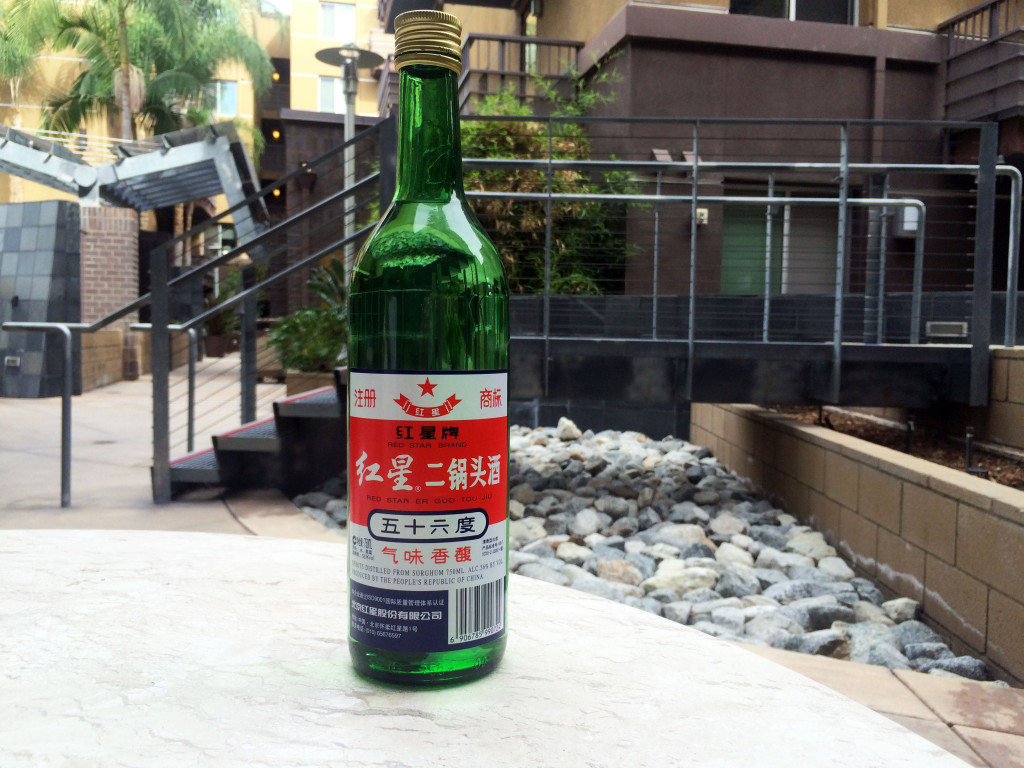
Rico Gagliano: OK, so maybe it’s got the least strong flavor, maybe?
Cari Hah: It’s very mellow… well, “mellow” in quotations… so it’s a little bit sweeter.
Rico Gagliano: All right, here we go.
Cari Hah: Here we go! Here we go! Bottoms up!
Rico Gagliano: I should let everybody know that it’s about 10:30 a.m. in Los Angeles, and I haven’t eaten anything.
Cari Hah: And we are looking at 56 percent alcohol by volume. Get at it!
Rico Gagliano: It’s the exciting life of a journalist.
Cari Hah: So, smell first. Smell first.
Rico Gagliano: It’s a little bit like a funky gin, is what it smells like to me.
Cari Hah: Gin, OK.
Rico Gagliano: What do you normally get?
Cari Hah: “This smells like toe cheese,” or like…
Rico Gagliano: It’s not that bad!
Cari Hah: “Funky gin” is like, a really very pleasant way to say it.
Rico Gagliano: Yeah. A lot of people don’t like gin, either, so maybe I’m–
Cari Hah: I think I smell like funky gin right now because I drank so much gin last night, I feel like it’s oozing from my pores, so…
Rico Gagliano: That’s true. It could be you. Here we go — I’m going to try some Red Star brand. [Tastes it.]
[Ed note: Rico’s mild “baijiu face” in .gif form.]
Oh, that’s not as bad as everybody’s saying. It’s got a strange aftertaste. It does have kind of like a…
Cari Hah: …Like a little sour, right?
Rico Gagliano: Yeah.
Cari Hah: Something like… for me, I liken that kind of aftertaste to… it hits you right on your cheeks, like you feel like you’re about to hurl.
Rico Gagliano: [Laughs.] That’s not what I’m feeling! I feel… it’s got a little bit of a leathery taste.
Cari Hah: I’m impressed. Your baijiu face — that’s what we call it, “baijiu face” — usually people grimace and like, “Ugh!” You know, like make horrible faces, but you are just pretty calm about this. I’m really impressed.
Rico Gagliano: Thanks. Do I get a prize?
Cari Hah: Seriously. You can take all the baijiu home!
Rico Gagliano: Oh, great! Let’s do the last one, which is the most expensive. This is a very tiny bottle that costs 80 bucks.
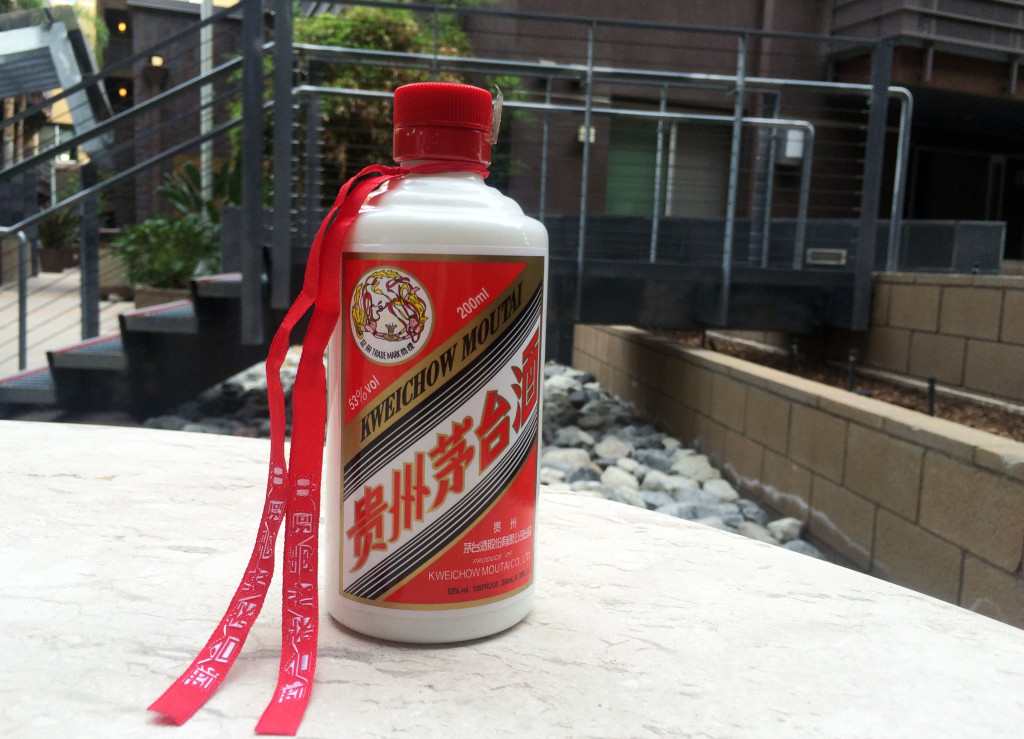
Cari Hah: It’s 200 milliliters. 200 milliliters for $80 is crazy. This is the most well-known bottle, this white ceramic bottle with the red. It’s called Moutai, and this is very high-end. This is what people usually give as gifts. This is very umami-ish, I would say.
Rico Gagliano: So, like soy sauce? Is that what…?
Cari Hah: Yeah, a little bit reminiscent of soy, but there’s no soy in it. This is the one that you see all the Chinese government leaders toasting with. It has more prestige than the brands Apple, Rolex, and Armani. So, there you go.
Rico Gagliano: In China?
Cari Hah: In China.
Rico Gagliano: OK. [Tastes Moutai.]
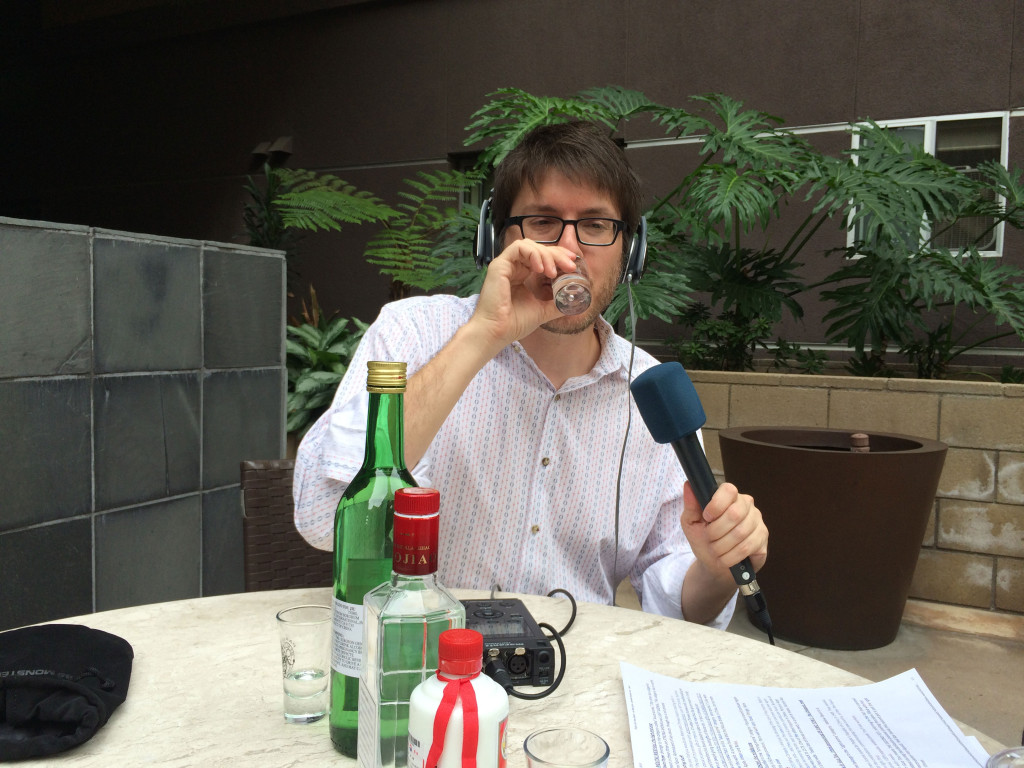
Oh, that’s a little… yeah [laughs]. That’s a little… that, actually, weirdly, has an aftertaste of a rich, funky cheese.
Cari Hah: Yeah, it’s a little bit fungal, a lot of mushroomy, fungal notes in baijiu.
Rico Gagliano: I just made baijiu face. I took another drink, and that time I got it.
Cari Hah: [Laughs.] There it goes!
